Editor’s Note
Stray Dog Institute works to strengthen all elements of the food systems transformation movement for the greatest positive impact for animals, people, and the environment. In this guest post, Faunalytics’ Content Director, karol orzechowski, examines how data and knowledge are mobilized within animal advocacy. karol highlights practices that can strengthen the reliability of the data advocates use and cautions against data communication practices that weaken the animal protection movement or leave advocates open to criticism.
Animal advocacy is a practice that has traditionally been associated with people driven by passion and propelled by emotion. This is not a bad thing, of course—most social justice movements are similarly constituted. However, emotions are not the same as data, and passion is not a guarantee of accuracy. No matter how strongly we feel about a given topic, we are still beholden to facts.
Fortunately, animal advocates have a growing body of research that supports our cause. The Faunalytics Research Library currently contains over 5,000 studies, surveys, analyses, and reports that support animal advocates’ in the various branches of the movement, and it is growing every day. Animal advocacy is becoming more data-driven, and that is a good thing.
Unfortunately, we live in a time when discerning accurate information seems to be more difficult than ever. The general public is awash in information, much of it from sources that are questionable at best. Moreover, there has been a growing distrust of “the mainstream media,” and academic or scientific research in particular has taken a beating in recent years as a cottage industry of COVID deniers and conspiracy theorists has emerged.[1]
In this context, how do animal advocates both find and disseminate information that is reliable, accurate, and persuasive? The first step is knowing how to discern those qualities ourselves. As the Content Director for Faunalytics—an organization dedicated to informing advocates and keeping them up to date on the best available scientific data to be more effective—I have a particular interest in this topic and do pro-bono work to help advocates with these issues all the time.
Establishing Credibility and Trust through Triangulation
Say you are an animal advocate who wants to find information about a particular animal issue, and you want to make sure that the information is legitimate. Let us pretend that you are looking for data about cow slaughter statistics and issues in the United States. Where do you begin?
You may start with a search of the Faunalytics website, for example, and find our coverage of statistics on global farmed animal slaughter from the United Nations Food and Agriculture Organization (FAO). You may also find this article, which is a summary of a study on post-slaughter examinations of cows. In both cases, the articles contain interesting information you may want to use in your advocacy. How do you determine the reliability of what is on our site, as well as the sources?
The first thing you would likely do is check our sources—in this case, the FAO and the Journal Of Dairy Science—and verify that we have our numbers correct. After that, you may want to read more about the sources themselves. You can read about the FAO data collection process here (and we even link to a critique of their collection methods in our piece). For the article from Dairy Science, you may look at the author list and their affiliations. In this case, they all seem to come from animal science or veterinary backgrounds and are not affiliated with any dairy companies listed in a Conflict of Interest declaration. You could also read up on the journal itself and find that it is a peer-reviewed publication, which gives you further confidence in what they report.
The benefits of relying on social media to communicate—instantaneous distribution, direct connection to the masses, compact and digestible messaging—are likewise its biggest risks and challenges.
What I have described above is the beginning of the process of triangulation, by which you can vet, verify, and compare data to make sure you are using the best and most accurate information possible. From there, you would delve further into the issue by looking at more sources—for example, you may check how the numbers on U.S. cow slaughter from the FAO compare to those released by the U.S. Department of Agriculture, and note any discrepancies. You may also do a deeper dive into scholarly research on dairy cow welfare at slaughter. Each layer will allow you to establish the reliability of a given piece of information and how it relates to other information.
You may have noticed, by now, that my example includes beginning with a pro-animal source (Faunalytics), and, from there, extends to sources that could be considered “neutral” or even “pro-industry.” While many animal advocates might balk at the idea of trusting animal product industries, ignoring industry statistics is a major oversight that animal advocates fall prey to. Overlooking such invaluable sources of information not only leaves usable data on the table but can also potentially lead to advocacy arguments that appear one-sided.
While it is completely understandable to assume that the animal agriculture sector has a vested interest in making their industry seem nicer than it is, we can also assume that anything animal-welfare-related they do actually report on provides a baseline of reliable information that we can work from. Many animal product companies are publicly traded, which means they must make annual reports that disclose a huge range of information from financial information to production statistics. There are also general industry publications that can provide information that you might never find on the pages of a vegan blog. Additionally, using information from the industry itself makes it clear to your audience that you are not trying to persuade them with a one-sided argument, and makes your argument harder for the industry itself to refute.
In addition to such sources, you may triangulate your data using other sources from Faunalytics, news stories from a reputable paper, or a place like the Well Being International Repository. No matter what method you use, however, the most important aspect is to keep digging through the layers to determine which information is most reliable.
The Importance of Honesty in Advocacy
Digging through academic and industry publications may seem tedious and time-consuming. Indeed, many advocates have turned to social media sources like Instagram and TikTok where information (and misinformation) travel at lightning speed. The benefits of relying on social media to communicate—instantaneous distribution, direct connection to the masses, compact and digestible messaging—are likewise its biggest risks and challenges. The dangers of online misinformation are not new—but it is becoming increasingly hard to spot.
All of this is compounded by the fact that many people confuse what they find on the internet for what they know, increasing their confidence in whatever sources they may prefer. In addition, cognitive biases can affect our perception without us realizing they are there. Everyone is subject to cognitive bias—even the “smartest” among us. Cognitive biases become particularly pernicious when they intersect with misinformation, and make factually wrong information seem even more appealing—or even more true.
Social media posts have the potential to go viral and reach millions of people in a short amount of time, but virality tends to value information that is sensational, and that inspires an emotional response. In other words, virality and veracity are not correlated, and in fact, have nothing to do with one another.
Why does this matter for animal advocates? Do we not have to compete on the same playing field as everyone else? Should we not be employing the same strategies to get our message out to as many people as possible?
Conforming to the way everyone else does things might be fine if we were judged on the same merits. However, we find in research time and time again that vegans are stigmatized—sometimes even by vegetarians!—and the views that underpin vegans’ choices are dismissed. Vegan advocates always seem to be fighting an uphill battle to make sure their protests and tactics are both persuasive and seen as credible. More than those in the establishment, we need to make sure our t’s are crossed and our i’s are dotted—we are fighting against an entrenched status quo that has institutional power and societal acceptance. Vegans are not alone in this challenge, however. Alongside other movements that seek to disrupt the status quo, we face obstacles like system justification, a theory that attempts to explain why people rationalize the status quo, even when it involves unequal or unjust outcomes.
Growing The Data-Driven Advocacy Movement
It is also important that we encourage other animal advocates to strive for accuracy and veracity, because—whether we like it or not as a movement—we tend to be seen collectively rather than as individuals, and vegan stereotyping persists. Anyone who has heard their friend or relative talk about their perception of “other vegans” or “other animal activists” knows that the actions of others will inevitably reflect upon us.
On a personal note, I have been involved with animal advocacy since 2005, and have seen first-hand how different elements of the movement have shifted from emotionally driven (but dubiously effective) activism towards advocacy that looks soberly at the data before making decisions or strategizing in the wrong direction. As that change has happened in the movement, I have seen the change happen within myself as well. I have realized that what is cathartic is not always strategically wise—and that the animals deserve our mindfulness when it comes to strategy. I believe that virtually all advocacy has its time and place—and the data can help us identify the best time and place to employ different tactics.
Though advocates are often working alone or in smaller groups, it is useful to think of the entirety of the animal advocacy movement as working in a collective capacity to educate the general public. This doesn’t mean we need to police each other or spend all of our time arguing with each other rather than fighting animal exploitation. However, being more data literate and holding each other to account can not only strengthen our efforts, but enhance our credibility. If we, as a movement, can commit to taking the data-driven high road in the battle for the hearts and minds of the public, we may find that we are able to make more meaningful and significant gains within our lifetimes.
[1]“Rise of Conspiracy Theories in the Pandemic Times | SpringerLink.” International Journal for the Semiotics of Law 35, no. 6 (July 1, 2022): 2373–89. https://doi.org/10.1007/s11196-022-09910-9.




